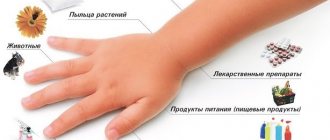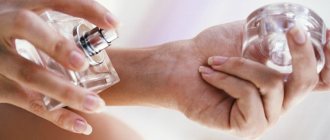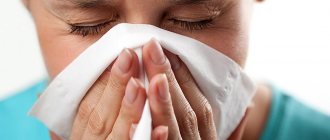In some cases, allergy manifestations pose a serious threat to human life. Such a dangerous reaction of the body to an allergic irritant is angioedema, or, as it is also called, Quincke's edema, for which first aid is provided immediately.
Manifestations of the pathology are most often rapid: in a matter of minutes, local swelling of the skin, mucous membranes and tissue of the deep layers of the skin occurs. Cases of swelling of the gastrointestinal tract, meninges and joint tissue have been recorded.
As a result, the functioning of many organs and systems of the body is disrupted, which can lead to the most dangerous manifestations of the pathology: laryngeal edema and anaphylactic shock.
In many patients, the manifestation of swelling is accompanied by a rash, which looks like red spots with jagged edges and blisters on them.
People of all age categories are susceptible to pathological reactions. However, most often it is recorded in women and children.
With angioedema, the duration of the reaction varies in all patients: from 5-10 minutes to 24 hours. In this case, the development of pathology can occur in three directions:
- Symptoms gradually disappear;
- Reduction of manifestations with alternating relapses;
- Symptoms increase rapidly, causing shock, suffocation and, ultimately, death of the patient.
In any case, first aid for angioedema is crucial. After all, the body’s reaction to this pathology is unpredictable.
Causes
Quincke's edema is an allergic-type disease, which was named after the doctor who first described the symptoms and features of the course more than a hundred years ago. The second scientific name for the condition is angioedema. Like other types of similar diseases, it is an individual reaction of the body to a specific pathogen. People with a history of allergies are more susceptible to malignant disease. The most common provocateurs:
- products - chocolate, citrus fruits, fish;
- pollen;
- insect bites, especially wasps and bees;
- toxic substances, including household chemicals and medicines;
- animal fur.
It is believed that people suffering from endocrine diseases, pathologies of the immune system, as well as those with high sensitization - that is, sensitivity to various types of allergens - are predisposed to Quincke's edema. Sometimes the disease occurs under specific conditions, for example, during sudden hypothermia.
Provoking factors
Two factors can trigger the development of edema:
- The body's reaction to an allergen;
- High permeability of vascular walls due to a genetically determined feature of the blood protein system (compliment).
When swelling is caused by an allergen, the body reacts instantly.
Factors that provoke swelling are all types of allergens, which can be divided into 2 groups:
1. Infectious irritants:
- Bacterial;
- Viral;
- Mushrooms.
2.Non-infectious:
- Dust;
- Insect poisons;
- Animal fur and fish scales;
- Medications;
- Food products;
- Industrial substances.
The first exposure to an allergen ends relatively well: the body begins to secrete class E immunoglobulins, preparing mast cells and basophils.
Upon repeated exposure to the irritant, the prepared cells disintegrate, releasing inflammatory mediators into the bloodstream. They have a spasmodic effect on the capillaries, due to which the plasma liquid, which is located in the vessels, enters the space between the cells.
It is easiest for water to get into areas filled with loose fiber: the face, hands, upper chest, feet, genitals. As a result, extensive swelling develops in these parts of the body.
Most often, this is how Quincke's edema develops in adults with a mature immune system.
Genetic predisposition manifests itself in a distorted complement system. It causes the production of basophils and mast cells already at the first exposure to an allergen. Moreover, the development of pathology is possible even with injury or severe stress.
This development of edema also often occurs in children aged three years and older.
There are several other provoking factors that result in angioedema:
- Diseases of the endocrine system;
- Some pathologies of internal organs;
- Diseases caused by worms or parasites.
Kinds
Angioedema occurs both independently and against the background of an existing allergic reaction. Despite the fact that the disease is described as an independent syndrome, it is closely related to other types of allergies. Therefore, even ordinary “urticaria” should not be taken lightly; a more severe form can become a complication. The following types are distinguished:
- acute - occurs spontaneously as a reaction to mediators (histamine, leukotrienes), develops quickly, within several hours, sometimes minutes;
- chronic - this means swelling that persists for more than six weeks during treatment;
- congenital - a rare pathology caused by dysfunction of the C1 inhibitor, usually a hereditary form.
There is a mixed version of the course, in which acute edema becomes chronic due to a disruption in the functioning of the immune system. This mechanism is called sensitization.
Diagnosis of the disease in a child
The doctor visually examines the baby’s body and throat and palpates it. An important role is played by the parents' story about the child's nutrition, taking medications, and the presence of allergic reactions.
We recommend: The temperature lasts 4 days in a child
After this, the doctor sends the little patient for urine and blood tests. Sometimes allergy tests can provide important information. They are able to identify the provoking antigen and eliminate its influence in the future.
If the baby is not yet 3 years old, then allergy tests are not prescribed for him. This type of diagnosis is supposed to be performed on children over 5 years old.
Symptoms
The symptoms of Quincke's edema are closely related to the mechanism of development of the disease. Due to an incorrect reaction of the so-called mast cells, proteins, usually histamine, are released. It causes disturbances in vascular permeability, which causes signs of Quincke's edema:
- swelling of soft tissues;
- decreased blood pressure;
- tachycardia;
- anxiety;
- deterioration of coordination;
- confusion.
Unlike localized urticaria, angioedema does not cause itching. The greatest danger is localization in the upper respiratory tract, since the patient may suffocate.
On the face
Eyes and lips are affected. Soft tissues change, the face becomes deformed. When localized on the eyelids, the patient partially or completely loses the ability to open his eyes until the symptoms subside. Without treatment, the tumor grows as the patient's inappropriate immune system response increases. Hyperemia is observed.
On the respiratory tract
The most dangerous localization of Quincke's edema is damage to the upper respiratory tract. Occurs with high frequency, up to 30% of all cases. Often the lesion spreads from the face and involves the airways. The patient experiences difficulty breathing; sometimes swelling of the throat or larynx can be seen without special equipment, but it can remain invisible externally. This condition is a direct threat to life, so it is necessary to begin providing first aid at home.
On internal organs
Localized in the stomach or intestines. Often appears as a reaction to foods or medications. Manifested by nausea, vomiting, and pain in the abdomen. Intestinal obstruction may occur due to swelling. In other cases, diarrhea occurs as the body's attempt to rid itself of a toxin. If painful sensations occur, differential diagnosis is carried out to exclude an attack of appendicitis.
Prognosis for Quincke's edema
In most cases, allergic angioedema in children develops benignly and has a favorable prognosis. Despite this, practice knows cases of recurrent course of the disease, which causes swelling of the larynx and many internal organs, bronchospasm and even anaphylactic shock.
With timely first aid and proper treatment, complications can be safely avoided. As a rule, the timely reaction of parents and the rapid arrival of an ambulance play a decisive role in a quick and successful recovery.
Algorithm for emergency care for angioedema
First aid for Quincke's edema consists of following several rules. Under no circumstances should one ignore a change in a person’s condition or believe that it’s just hives and “will go away on its own.” Actions include:
- Calling an ambulance is the first step in any case.
- The patient should not lie down, it is better to sit.
- Isolate the patient from the source of the allergy, if possible.
- Loosen your clothes to help you breathe.
- Take sorbents - activated carbon and analogues.
- Use any antihistamines.
If Quincke's edema is located on the extremities, you can use a cooling method - a cold compress. In some cases, this helps to localize and limit the process. If the provocateur is an insect bite that falls on a limb, you can apply a tourniquet.
Hormone therapy is the most effective. Prednisolone and its analogues are used, which reduce the activity of mast cells and the production of histamine. When calling an ambulance, the nurse immediately gives an intramuscular injection. In emergency cases, when breathing is impaired and there is a risk to life, a tracheotomy with intubation is performed. With proper treatment, Quincke's edema disappears in an average of 72 hours.
Actions before the arrival of the medical team
Emergency care for giant urticaria or angioedema includes measures that are performed before the doctor arrives.
- Termination of exposure to the stimulus. If the body has reacted sharply to a bee or wasp sting, you need to remove the sting; if you are using the drug, stop taking it.
- Creating comfortable conditions.
- Providing access to oxygen. You need to unbutton tight clothing.
- Use a cold compress for severe itching of the swollen area.
- Drinking fluids.
- Cleansing the body of allergens with sorbents.
- The use of drugs with antihistamine properties: Diazolin, Suprastin.
- To facilitate nasal breathing, you can use nasal drops that have vasoconstrictor properties.
- The use of hot foot baths helps slow the spread of swelling.
You cannot give the patient injections or give medications (except for the above). Incorrect emergency services can lead to unpredictable consequences.
How to relieve angioedema at home
Despite the fact that angioedema is treated in a hospital setting, first aid for the disease includes methods available to anyone. Antihistamines are sold at pharmacies, most without a prescription. Even if such a medicine is not enough to completely relieve swelling, the drugs will slow down the progression of the disease.
Help at home involves taking action before the ambulance arrives. The main methods remain sorbents in combination with antihistamines, and, if possible, removal of the provoking substance. The patient should not be at rest, it is advisable to sit, and also force himself to remain conscious, and under no circumstances fall asleep even during an attack of drowsiness.
Treatment of Quincke's edema in children
At the first signs of developing Quincke's edema, you should immediately call an ambulance. Before doctors arrive, it is necessary to provide first aid to the child. It is necessary to calm a child who is agitated by seizures, remove his tight clothes and open the window. If necessary, vasoconstrictor drops should be placed into the nose.
If a child swallows an allergen, it is necessary to take measures to cleanse the stomach. You need to give activated carbon or another sorbent.
Doctors prescribe subcutaneous injection of solutions of adrenaline and ephedrine. In severe cases, Hydrocortisone, Dexamethasone, and Prednisolone are injected into the muscle tissue.
If there is no threat to life, they are treated with antihistamines, such as Suprastin, Diphenhydramine. You may also need to use antiallergic drugs (Claretin, Tavegil, Zodak, Zyrtec, Fenistil). Additional therapy is taking vitamins, diuretics, drugs and sorbents.
Characteristics of first aid for children
Helping a small child with Quincke's edema differs from the remedies used for adults in that children do not always complain to adults about changes in a timely manner, which means that you need to notice the manifestations of the disease yourself. To give the baby the necessary body position, he is picked up. The dosage of medications varies depending on the child’s weight and special indications.
First of all, it is necessary to calm the child if he is crying or scared. Quincke's edema is often accompanied by anxiety and panic, so the parents' task is to normalize the baby's condition as much as possible. The remaining measures do not differ from ways to help adults. When using antihistamines, you need to check the instructions in accordance with the child's age.
Symptoms of Quincke's edema in children
The mucous membranes can be affected in different parts. Depending on the source of inflammation, symptoms will vary:
- Damage to mucous membranes and subcutaneous tissue. Swelling develops rapidly, the first swellings are visible within 10 – 30 minutes. The swelling lasts from several hours to several days. You may notice swelling on the lips, cheeks, eyelids, forehead, feet, hands, or scrotum. With difficulty speaking and pain when swallowing, the infection penetrated deep into the oral mucosa.
Palpation of the affected areas of the skin is completely painless. No pits remain when pressed.
- Laryngeal damage. Develops at lightning speed. The child panics and suffocates. The face turns blue and the voice disappears. May resemble attacks of bronchial asthma. With simultaneous swelling of the nasal mucosa, allergic rhinitis occurs.
- Abdominal syndrome. The mucous membrane of the esophagus, intestines and stomach is affected. It develops suddenly and at the initial stage does not reveal itself as swelling of the subcutaneous tissue. Unbearable and quite sharp pains appear in the abdomen and severe vomiting occurs. Profuse diarrhea with bloody impurities is possible.
- Neurological edema. Due to brain damage, an epileptic seizure may occur. Muscle rigidity, dizziness appear, and the child sees worse.
The importance of providing timely first aid
Quincke's edema is a rather rare, but at the same time dangerous condition. In its severe forms, not only the skin and subcutaneous tissue of various parts of the face and body are affected, but also the internal organs and membranes of the brain. In such cases, pathological conditions similar to peritonitis and meningitis may occur.
But the most dangerous thing is swelling in the area of the nasopharynx and larynx, in which narrowing airways can lead to oxygen starvation, suffocation, and in the most severe cases, death. In children and preschool children, compared to adults, the likelihood of angioedema of the face and neck being aggravated by swelling of the respiratory tract increases significantly, so even if the child’s condition is satisfactory, it is necessary to seek competent medical help.
The characteristic symptoms of Quincke's edema are the rapidity and intensity of its development. Starting with a slight swelling, the edema in a matter of minutes can acquire life-threatening proportions, including asphyxia. Therefore, in such situations, every second counts and even before the ambulance specialists arrive, it is necessary to provide first emergency aid to the patient.
Top
Signs that require immediate action
A characteristic feature of the pathology is the rapid development of allergic manifestations: the first symptoms of swelling appear immediately after interaction with the allergen.
The main symptom of the disease is swelling of organs, the structure of which consists of mucous membrane or subcutaneous tissue.
Most often, Quincke's edema affects the following parts of the body:
- oral mucosa and tongue;
- soft tissues of the face - lips, eyelids and cheeks swell;
- cervical area;
- external genitalia;
- dorsum of the upper and lower extremities.
In addition to external soft tissues, internal organs swell: larynx, stomach, intestines, esophagus and bladder.
Also, an allergic reaction contributes to the formation of cerebral edema, which causes the development of a neuralgic disorder.
Quincke's edema is accompanied by the following specific symptoms:
- Painful sensations that develop during palpation of swollen tissues.
- The presence of a feeling of fullness and burning: thickening of the skin on which swelling has formed.
- Change in color of the affected area of the skin: it takes on a bluish tint.
- Development of hoarseness, shortness of breath and dry cough: often these symptoms are aggravated by difficulty breathing.
- Frequent occurrence of seizures.
- Disorder of the urinary process.
- The presence of an itchy, inflamed rash on the skin, which indicates the development of a concomitant pathology such as urticaria.
- Defecation disorders: regular stomach upset and vomiting.
Pronounced symptoms cause a deterioration in the patient’s general well-being. Since an advanced form of allergy provokes blood flow disturbances and increases the risk of asphyxia, at the first signs of swelling you should consult a doctor.
Prevention
To prevent the development of a severe allergic reaction - Quincke's edema, following certain rules and recommendations will help:
- exclude from the diet of a child with allergies all foods that can cause a negative reaction in the body;
- Start the feeding process gradually. Introduce foods unfamiliar to the baby in minimal doses, carefully monitoring the body’s reaction;
- any medicine is prescribed only by a doctor, based on the results of examinations and tests;
- Monitor the child’s health condition. Any disease requires immediate medical consultation;
- If your baby has been vaccinated, do not rush home. It is better to stay in the clinic for twenty to thirty minutes after the injection, so that in case of a negative reaction, the baby receives the necessary help;
- choose only hypoallergenic household chemicals;
- Do not allow your child to become stressed. Fears and negative emotions not only negatively affect the development of the child, but can also cause an allergic reaction.
Quincke's edema is a life-threatening pathology. Knowledge of how to help a child with the development of a severe allergic reaction, clarity of action and lack of panic will help save the life of a little person.
Galina Polovnikova / author of the article
I write articles in various areas that, to one degree or another, affect such a disease as edema.
We recommend further reading: Symptoms and treatment of angioedema at home










